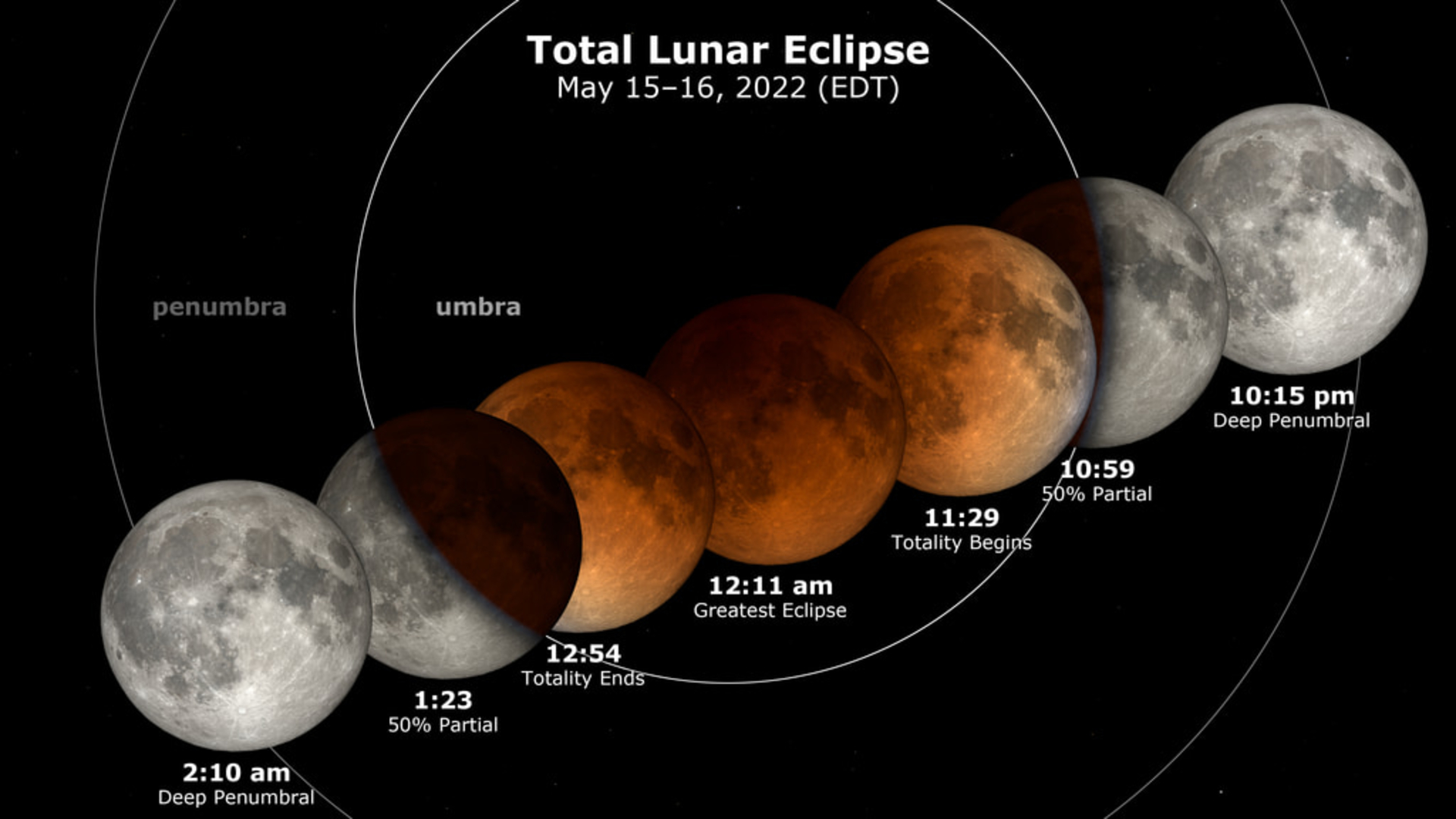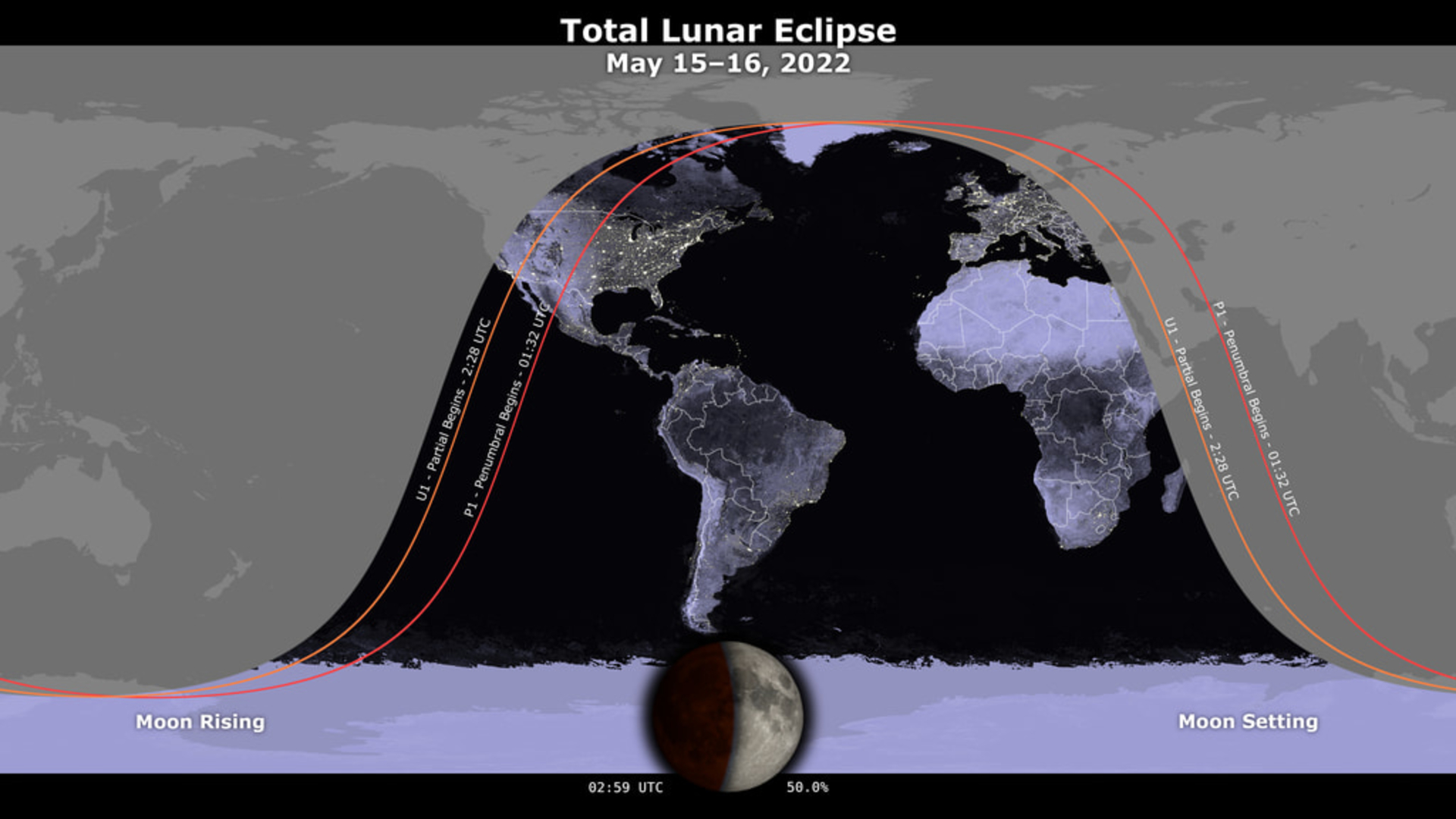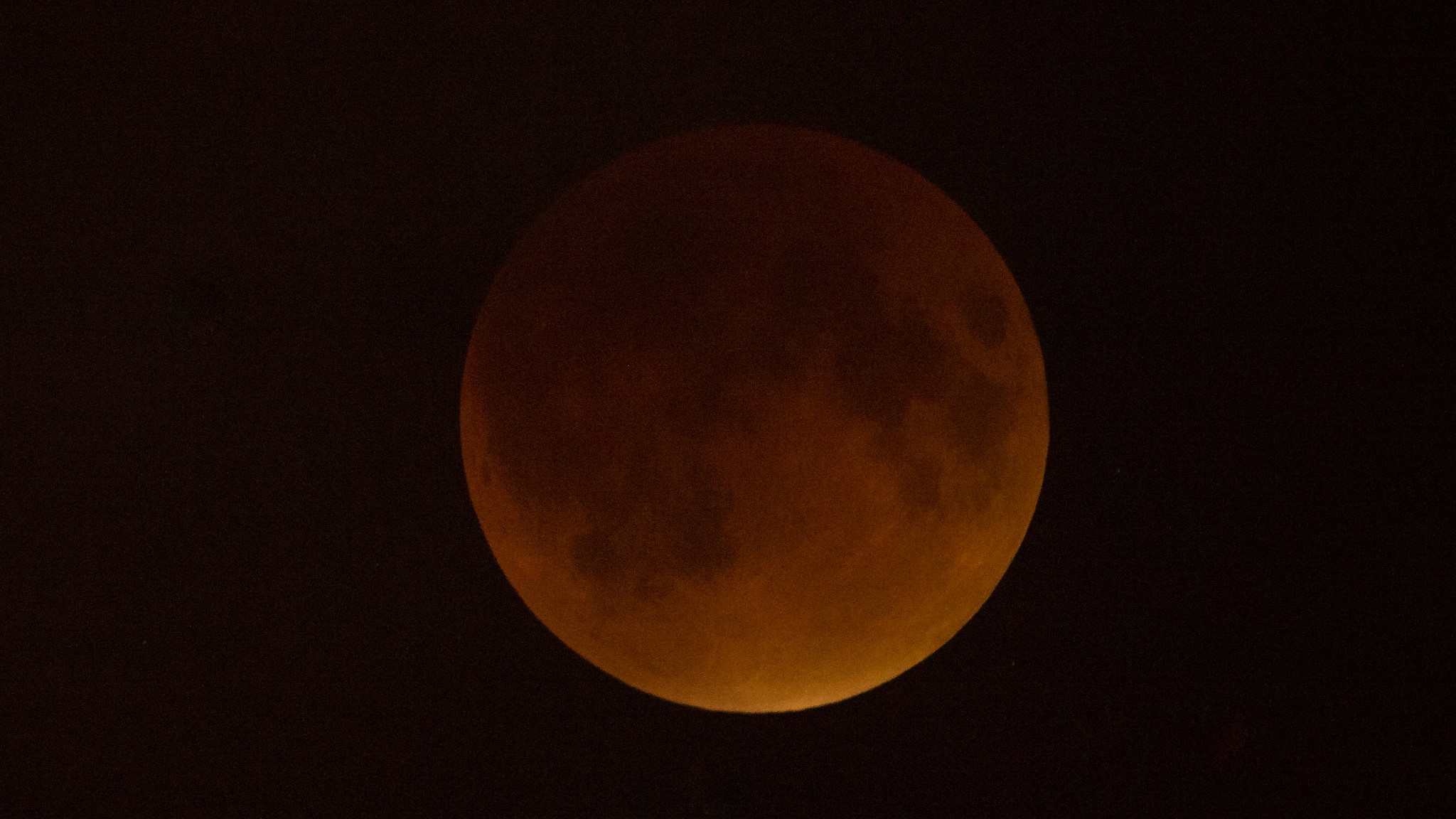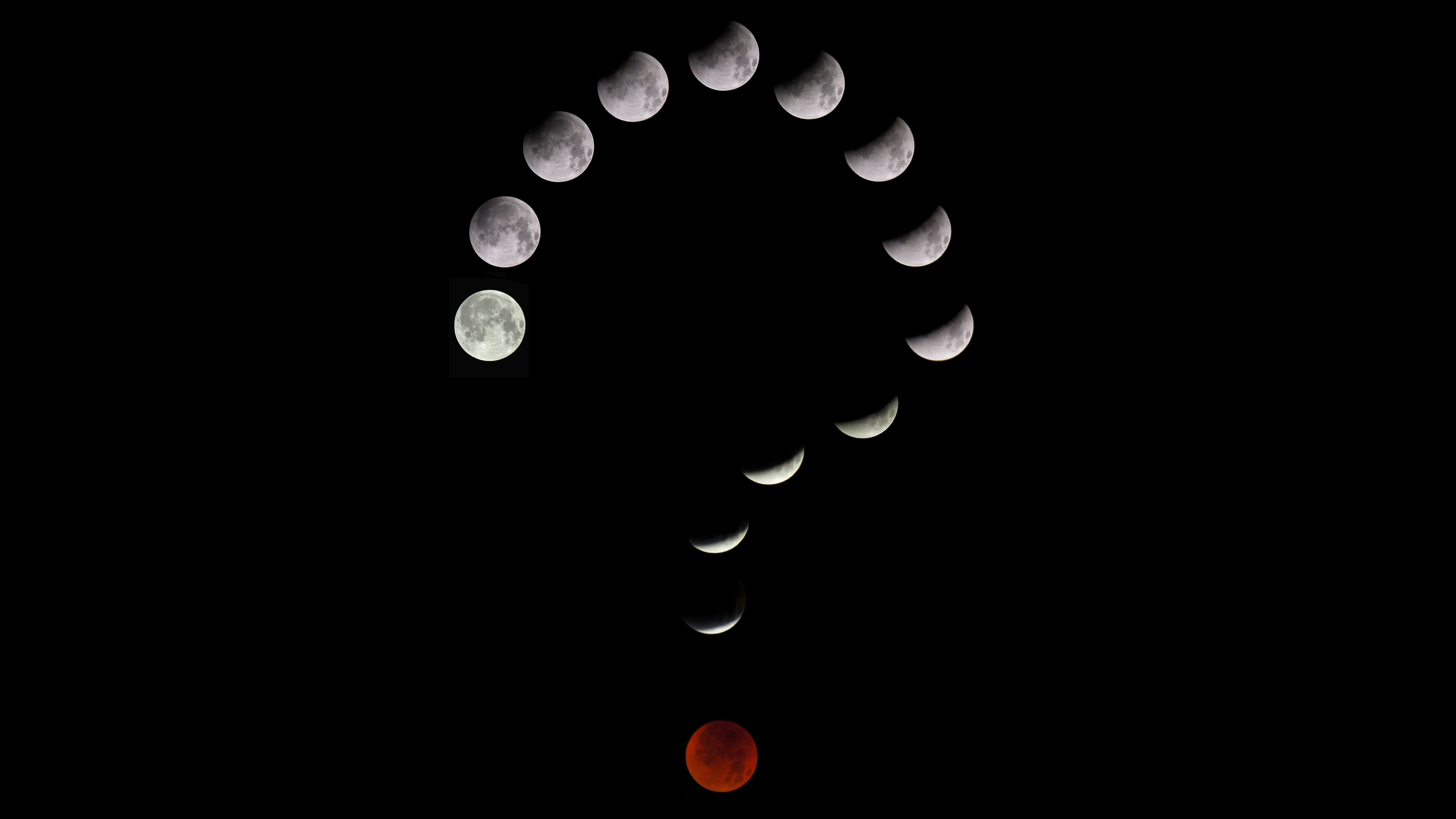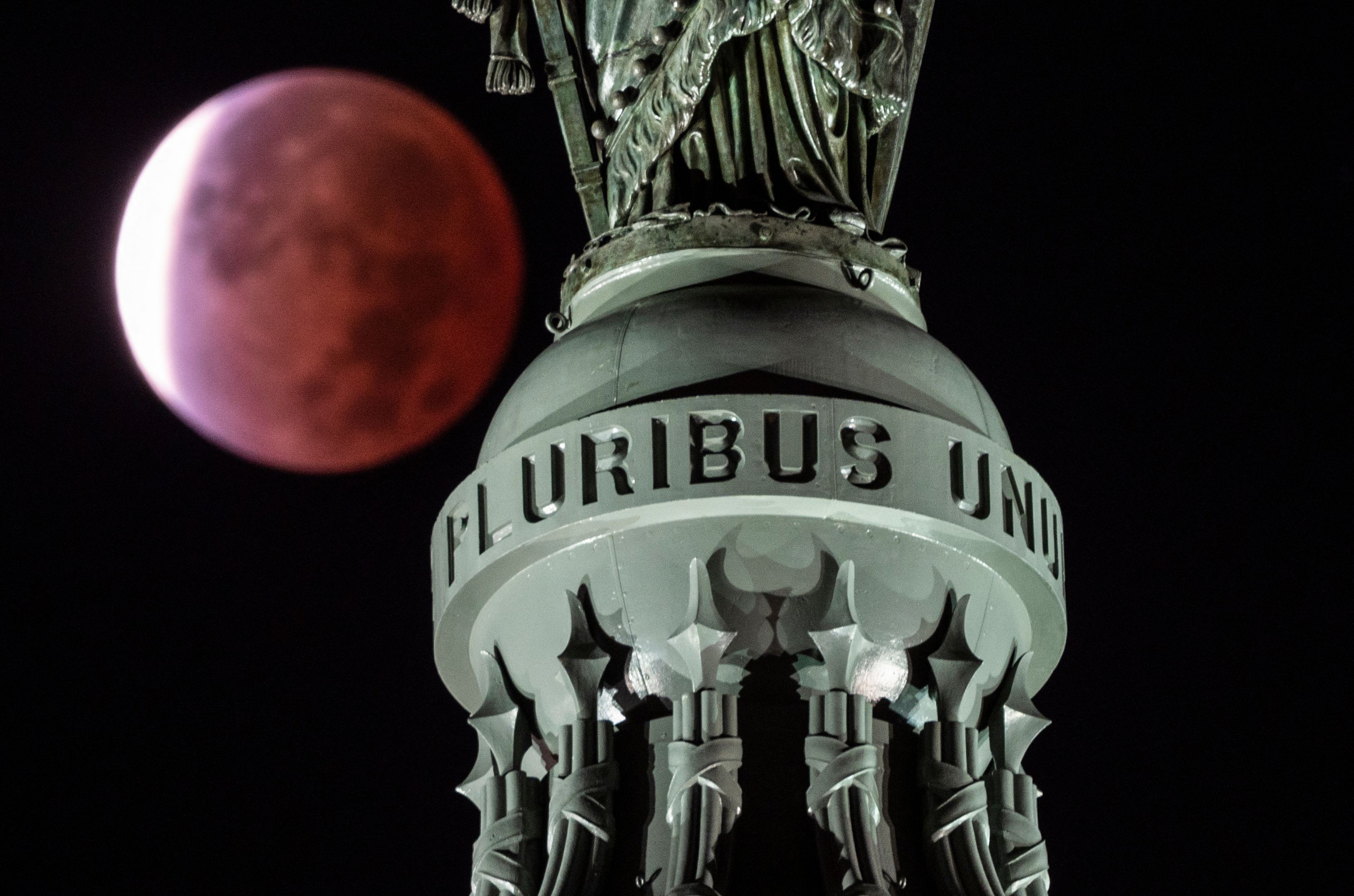Super Flower Blood Moon 2022: Everything to know for the total lunar eclipse
It will be visible in parts of the Americas, Antarctica, Europe, Africa, the east Pacific, New Zealand, eastern Europe and the Middle East.
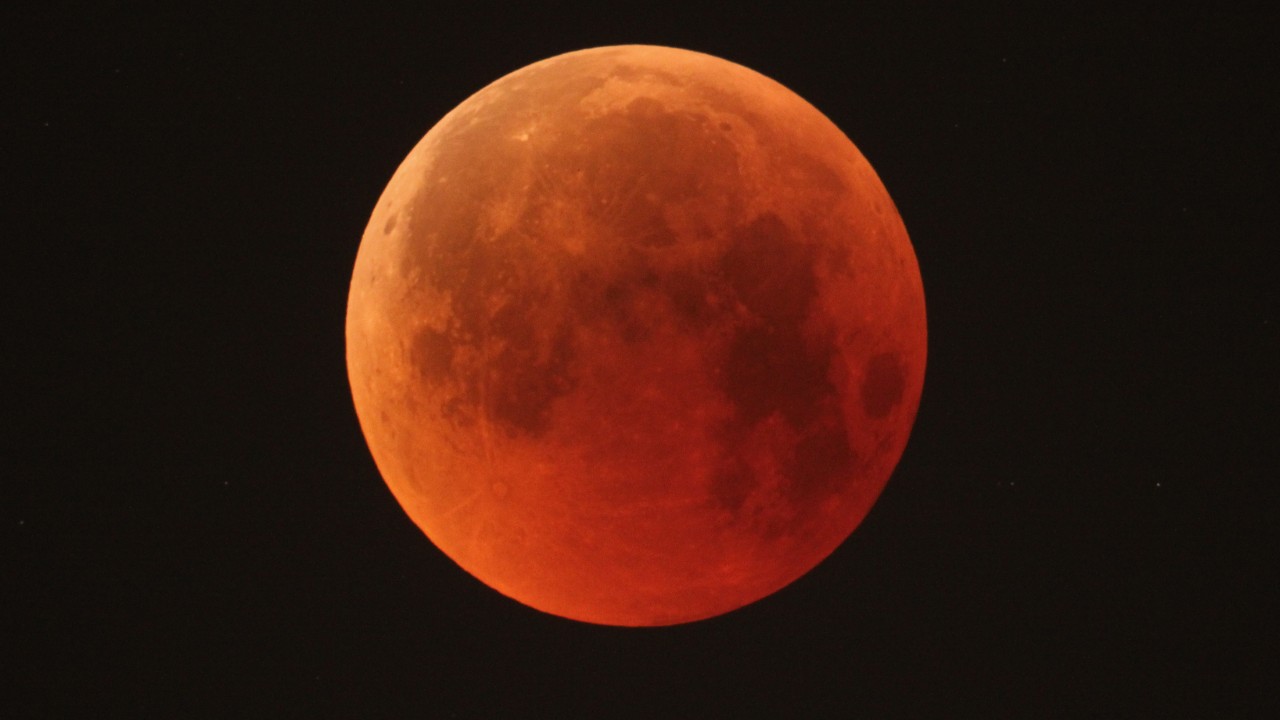
Editor's note: The total phase of the Super Flower Blood Moon lunar eclipse has ended. You can read our wrap story on the first total lunar eclipse of 2022.
The first lunar eclipse of 2022 will take place on May 15 and 16, depending on your time zone.
A total lunar eclipse, which happens as the full moon moves into the deep umbral shadow of the Earth, will be visible in total phase from portions of the Americas, Antarctica, Europe, Africa and the east Pacific. Meanwhile, a penumbral eclipse, an event arising when the moon is in the lighter penumbral shadow from our planet, will be visible in New Zealand, eastern Europe and the Middle East. Eclipse scientist Fred Espenak has listed May 15th's full moon as a so-called supermoon, in which the full moon is at perigee (its closest to Earth of the month), making it a Super Blood Moon eclipse.
Webcasts: How to watch Super Flower Blood Moon lunar eclipse online

Looking for a telescope for the lunar eclipse? We recommend the Celestron Astro Fi 102 as the top pick in our best beginner's telescope guide.
While timing depends on your location, TimeandDate.com says the partial eclipse begins May 15 at 10:28 p.m. EDT (0228 GMT on May 16). The Blood Moon will peak May 16 at 12:11 a.m. EDT (0411 GMT). Then the event ends at 1:55 a.m. EDT (0555 GMT). Note the penumbral moon phase of the eclipse will begin about an hour earlier and end about an hour after the partial eclipse.
If you're hoping to photograph the moon, or want to prepare your gear for the total lunar eclipse, check out our best cameras for astrophotography and best lenses for astrophotography. Read our guides on how to photograph a lunar eclipse, as well as how to photograph the moon with a camera for some helpful tips to plan out your lunar photo session.
This will be the first of two lunar eclipses in 2022. The next one will take place on Nov. 8, 2022. It will be visible at least partially from Asia, Australia, North America, parts of northern and eastern Europe, the Arctic and most of South America, according to TimeandDate.com.
Breaking space news, the latest updates on rocket launches, skywatching events and more!
2023 will also see two lunar eclipses. The first will be May 5 to 6, 2023; it's another penumbral one visible, at least partially, from southern and eastern Europe, Antarctica, most of Asia, Australia, Africa as well as the Pacific, Indian and Atlantic oceans.
The second will be a partial eclipse on Oct. 28 to 29 visible at least partially from Europe, Asia, Australia, Africa, North America, northern and eastern South America, the Arctic, Antarctica and the Pacific, Atlantic and Indian oceans.
Here are some tips to help you get the most out of the May 15 to 16 lunar eclipse.
What time is the Blood Moon and how to watch online?
While the visibility of the eclipse depends on your region, timeanddate.com has information about when the eclipse begins and ends globally. The partial eclipse begins May 15 at 10:28 p.m. EDT (0228 GMT on May 16).
The Blood Moon comes to the fore on May 16 at 12:11 a.m. EDT (0411 GMT). All eclipse phases end 1:55 a.m. EDT (0555 GMT). (If you're in the region of the penumbral eclipse, it will be roughly an hour earlier and end about an hour after the partial eclipse.)
We also have some livestreams of the event on YouTube, embedded below. First up is NASA Science Live, which starts at 9:32 p.m. May 15 (0132 GMT May 16.) It will include a discussion on eclipses, moon science and the agency's moon-landing Artemis program.
Astronomy broadcasting service Slooh's webcast starts on May 15 at 9:30 p.m. EDT (May 16 0130 GMT). You should hear from astronomy enthusiasts about the eclipse and its cultural significance. Slooh only plans to showcase the total phase publicly, with the partial eclipse covered in a members-only Discord channel.
There is also the broadcast from TimeandDate.com. Starting at 10 p.m. EDT May 15 (0200 GMT May 16), it plans to broadcast the entire event as long as the weather is cooperative.
There will likely be more webcasts as we get closer to the May 15-16 event. We'll share those here in a dedicated webcast guide as we learn more.
What will the Blood Moon lunar eclipse look like?
When a total lunar eclipse happens, it passes into the umbra or deep shadow of the Earth. Light from our planet is refracted around the edges of the atmosphere and falls upon the moon's surface. That's where the red hue comes from.
More simply put, you can imagine the sunsets and sunrises of our planet being reflected upon the moon's surface; as the sky looks redder during this phase of the day, that is another way of explaining why the Blood Moon color happens.
Penumbral eclipses are a little trickier to see. These occur when the moon only passes within the penumbra, or lighter shadow, of our planet. Sometimes it is very difficult to see the moon's darkening, but depending on how much light pollution you are dealing with you may get luckier. The moon will not turn red for a penumbral eclipse but should look a little bit darker than usual.
Where is the Blood Moon lunar eclipse visible?
The lunar eclipse will be visible in parts of the Americas, Antarctica, Europe, Africa, the east Pacific, New Zealand, eastern Europe and the Middle East, but as you can see from the visibility diagrams, what you see depends on where you are located.
It will be visible in total phase from portions of the Americas, Antarctica, Europe, Africa and the east Pacific. The penumbral eclipse will be visible in New Zealand, eastern Europe and the Middle East.
Blood Moon lunar eclipse viewing tips
As long as you're in a safe environment, there are no worries with looking at a lunar eclipse. Unlike a solar eclipse, which requires certified eclipse glasses, an eclipse of the moon is a safe event. Also unlike a solar eclipse, the totality phase lasts much more than just a few minutes.
We recommend heading outside at least 20 minutes before the eclipse starts, to get your eyes adjusted to the darkness. Equipment such as cameras, telescopes and binoculars may need a few hours to adjust to the different temperatures and humidity outside, so bring them out as soon as possible to avoid dew issues.
Astrophotographers will want to consult our guide on how to photograph a lunar eclipse. Make sure to practice before the big event to make sure all your settings are correct and that you are comfortable with the process.
When you're outside, make sure you dress for the weather and do what you can to feel comfortable for the event. Lawn chairs, hydration and keeping bright phones or flashlights away will maximize the pleasure of the eclipse.
What causes lunar eclipses?
Lunar eclipses occur when the moon passes into the shadow of the Earth. Since the Earth and the moon have slightly tilted orbits to each other, this happens generally a couple of times a year when the tilts of the orbit align. Depending on how that happens, you may get a penumbral, partial or total eclipse.
Penumbral eclipses happen when the moon skirts into the lighter shadow of the Earth. This flavor of eclipse is sometimes hard to see, as the moon will only grow slightly darker. It also will not turn red.
Partial eclipses occur when the moon goes partially into the umbra, or deeper shadow, of our planet. The moon will also not turn red, but you will see a dark "bite" out of the visible surface, which represents the Earth's shadow.
When is the next lunar eclipse?
The next and last lunar eclipse of the year will take place on Nov. 8, 2022. The total lunar eclipse will be visible at least partially from Asia, Australia, North America, parts of northern and eastern Europe, the Arctic and most of South America.
Then in 2023, there are two lunar eclipses to look forward to. On May 5 to 6 of that year, a penumbral lunar eclipse will be visible, at least partially, from southern and eastern Europe, Antarctica, most of Asia, Australia, Africa as well as the Pacific, Indian and Atlantic oceans.
The second and final lunar eclipse of 2023, a partial one, will occur on Oct. 28 to 29. This eclipse will be visible at least partially from Europe, Asia, Australia, Africa, North America, northern and eastern South America, the Arctic, Antarctica and the Pacific, Atlantic and Indian oceans.
Following a penumbral eclipse on March 25, 2024, and a partial eclipse on September 18, 2024, the next total eclipse will occur on March 14, 2025. The total phase will be visible in parts of Africa, Europe, Asia, Australia and the Indian Ocean, with the partial phase visible in parts of Africa, Europe, South America and the Atlantic and Pacific oceans.
Editor's Note: If you snap an amazing lunar eclipse photo and would like to share it with Space.com's readers, send your photo(s), comments, and your name and location to spacephotos@space.com.
Follow Elizabeth Howell on Twitter @howellspace. Follow us on Twitter @Spacedotcom and on Facebook.

Elizabeth Howell (she/her), Ph.D., was a staff writer in the spaceflight channel between 2022 and 2024 specializing in Canadian space news. She was contributing writer for Space.com for 10 years from 2012 to 2024. Elizabeth's reporting includes multiple exclusives with the White House, leading world coverage about a lost-and-found space tomato on the International Space Station, witnessing five human spaceflight launches on two continents, flying parabolic, working inside a spacesuit, and participating in a simulated Mars mission. Her latest book, "Why Am I Taller?" (ECW Press, 2022) is co-written with astronaut Dave Williams.




